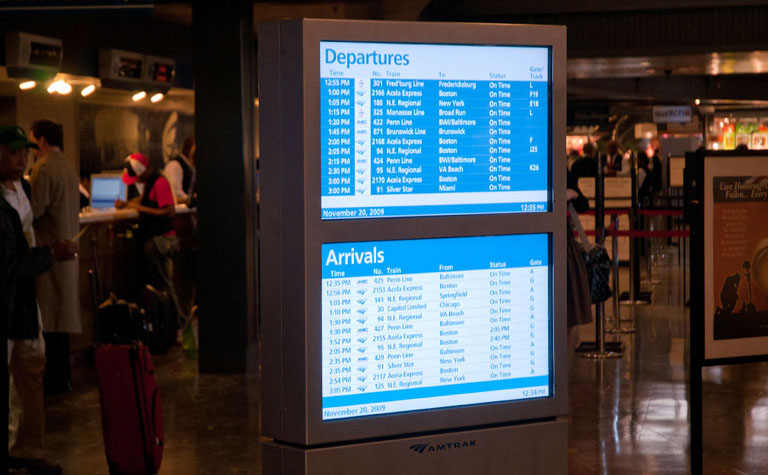Amtrak System
Pleased with the work Infax and International Display Systems had done in upgrading passenger information systems at the railroad’s headquarters, Union Station in Washington, D.C., Amtrak initiated a 3-station pilot project to roll out modern LCDs, integrated audio and visual public address, and automated message handling for passenger information.
Included in the project were new LED displays that replace aging split-flap signs in Baltimore’s Penn Station (the nation’s eighth-busiest rail station), LCDs displaying public address messages and train information, and platform LEDs providing arrival status and train car information for arriving trains.
Infax provided software to drive all displays throughout the stations, and to build and trigger synchronized audio announcements through a Penta public address system. Amtrak personnel make changes to scheduled operations through an Infax-created web interface. Infax software also handles data distribution between Amtrak’s data center and the stations.
The system’s key is an Infax interface to Amtrak’s train operations web services. The application adjusts train information to Amtrak’s best estimates, and has been carefully optimized to reduce unnecessary queries. Train status updates trigger advanced logic that can display different messages depending on prior train status, for instance, “Train 345, which was scheduled to arrive at 12:53, is now scheduled to arrive at 1:32, due to a mechanical problem.” Amtrak personnel adjust time for boarding, last call, and a number of other events relative to the train’s scheduled arrival or departure time, and announcements are adjusted to match.
